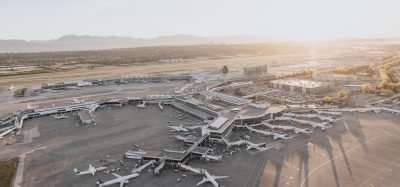Munich airport’s winter maintenance ensures safe operations despite snow, ice, and harsh conditions
- Like
- Digg
- Del
- Tumblr
- VKontakte
- Buffer
- Love This
- Odnoklassniki
- Meneame
- Blogger
- Amazon
- Yahoo Mail
- Gmail
- AOL
- Newsvine
- HackerNews
- Evernote
- MySpace
- Mail.ru
- Viadeo
- Line
- Comments
- Yummly
- SMS
- Viber
- Telegram
- Subscribe
- Skype
- Facebook Messenger
- Kakao
- LiveJournal
- Yammer
- Edgar
- Fintel
- Mix
- Instapaper
- Copy Link
Posted: 3 December 2024 | Gabriel Higgins | No comments yet
Munich Airport’s winter maintenance service deploys 184 vehicles and 600 personnel to ensure safe operations, clearing 5.6 million square metres during snow and ice conditions.


To ensure safe operations around the clock, even during harsh winter conditions, Munich Airport (MUC) offers a dedicated winter maintenance service from early November to mid-April. In the event of snow or ice, a comprehensive winter maintenance fleet is deployed, comprising 184 vehicles: 152 for clearing and de-icing airfield areas and 32 for roads, pathways, and car parks in the public zones. Among these, 71 tractors are sourced from the local area.
In total, approximately 600 personnel are involved in the winter service, with around 520 coming from regional farming and haulage businesses. Each shift sees over 200 workers ensuring that all areas within the airport are kept clear of snow and ice.
When it snows, large sections of the airport must be cleared to maintain smooth and safe operations. The two runways, aprons, and taxiways alone span around 5.6 million square metres—an area comparable to over 780 football pitches. Clearing a single runway, which measures over 4,000 metres in length and 60 metres in width, takes approximately 30 minutes.
How will the winter maintenance work?
Numerous specialised vehicles are used, including 22 snow sweepers, 5 rotary snowplows and a snowcat. In addition, new vehicles have been purchased and existing vehicles have been upgraded, e.g. the addition of plows with a larger clearing width. As well as the equipment owned by the airport, the tractors belonging to those farmers in the winter service are fitted with snowplows.
The winter maintenance team is alerted by Airport Operations division, which monitors the condition of the movement areas around the clock. In addition to the latest forecasts from Germany’s National Meteorological Service (German: DWD), Airport Operations is supported by an early warning system for black ice. This system continuously gathers updated data from a total of 18 measuring stations throughout the airport. Furthermore, special vehicles are used to regularly check the braking conditions on the runways.
The cleared snow masses that are cleared are loaded onto six snow depots. A total of up to 2.2 million cubic meters of snow accumulate here each season. An underground collection reservoir ensures that the meltwater is not released into the environment.
Mechanical cleaning of the traffic areas is given priority for environmental protection reasons. The use of surface de-icers is only necessary when the movement areas are at risk of icing over. Gutters along both sides of the runways catch the runoff and carry it to a meltwater retention basin. From here, the meltwater is conveyed to the treatment plant in Eitting in a controlled manner. On some of the surfaces, silica sand is used instead of de-icing fluid.
However, it’s not just the traffic areas of the airport that must be kept in a safe operating condition during the cold season: The airplanes must also be cleared of snow and ice before takeoff. This is carried out by the “polar bears” provided by the Company for De-Icing and Aircraft Towing at Munich Airport Ltd. (German: EFM), a subsidiary of Deutsche Lufthansa AG and Munich Airport. “Polar bears” are special vehicles that spray the aircraft with de-icer immediately before take-off. The EFM de-ices up to 15,000 aircraft – from Learjets to Airbus A380s – every year. The used de-icer is collected and mostly recycled.
With all the necessary preparation, technical equipment and personnel deployment, extreme ice and snow conditions can prove to be a major challenge for the airport, airlines and service providers involved. Due to the de-icing of the aircraft, the clearing of numerous areas, and all other winter service measures, there can be delays to scheduled aircraft handling. However, the ultimate goal is to ensure safe flight operations.
Related topics
Airport development, Airside operations, Winter operations, Workforce


















